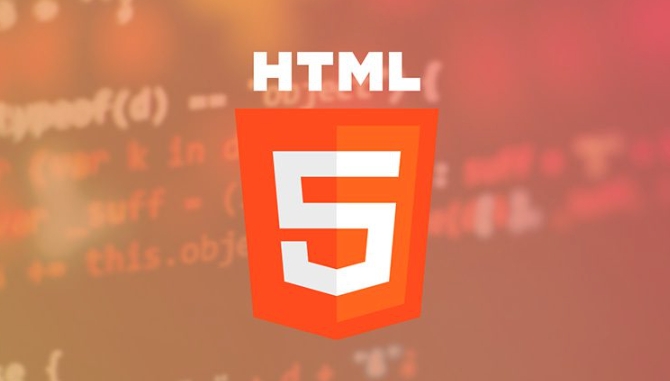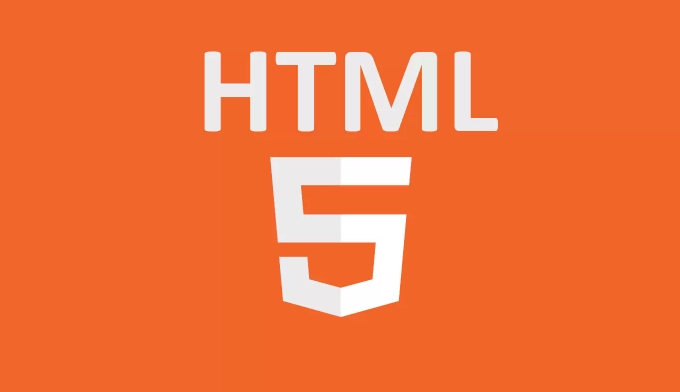How to set custom error message with JavaScript? 1. Use the setCustomValidity() method to combine native form verification, and set prompts for specific input conditions through JavaScript. For example, when the username is less than 3 characters, it prompts "the username needs at least 3 characters"; 2. Combine HTML attributes (such as required, pattern) and JS supplementary verification, and return targeted prompts according to different reasons for verification failure. For example, when the email format is inconsistent, "the email must end with @example.com"; 3. Note that after each verification, you need to call setCustomValidity('') to clear the error information, select appropriate events (input and invalid) for listening, and ensure good mobile compatibility.

In web development, HTML5 form verification is a very practical feature that can automatically check whether the input content meets the requirements when the user submits a form. However, the default error message is often stiff and unfriendly. If you want to improve the user experience, customizing the error message is an easy but effective way.

Here are some practical methods to teach you how to implement custom form verification prompts using HTML5.

How to set custom error messages with JavaScript
HTML5 provides the setCustomValidity() method, allowing us to set custom error prompts for form elements. This method can be used in conjunction with the native form verification mechanism.
For example:

<input type="text" id="username" required>
You can add verification logic and prompt information through JavaScript:
const input = document.getElementById('username');
input.addEventListener('input', function () {
if (input.value.length < 3) {
input.setCustomValidity('The username requires at least 3 characters');
} else {
input.setCustomValidity('');
}
});In this way, when the user enters less than 3 characters, he will see the prompt you set.
Tips: When the parameter of
setCustomValidity()is an empty string, it means that the current input is valid. If not empty, the form is submitted and the corresponding error message is displayed.
Combining HTML attributes and JS to achieve more flexible control
In addition to using JavaScript to control it completely, you can also use basic HTML attributes (such as required , minlength , pattern ) as preliminary restrictions, and then use JS for additional verification.
for example:
<input type="email" id="email" required pattern=".*@example\.com">
Then use JS to customize the prompt:
const emailInput = document.getElementById('email');
emailInput.addEventListener('invalid', function (e) {
if (emailInput.validity.valueMissing) {
emailInput.setCustomValidity('Please enter your email address');
} else if (emailInput.validity.patternMismatch) {
emailInput.setCustomValidity('Emailbox must end with @example.com');
} else {
emailInput.setCustomValidity('');
}
}, false);This method allows you to return more targeted prompts based on different reasons for verification failure.
Notes and FAQs
- Don't forget to clear the error message : remember to call
setCustomValidity('')after each verification, otherwise the form will not be submitted even if the input is correct. - Event selection should be accurate :
inputandinvalidevents are usually used together.inputis used for real-time verification,invalidis used to capture the browser's default error prompt triggering time. - Mobile compatibility is generally good : modern browsers and mobile phones support this API, but in some old browsers, it may require downgrade processing.
Basically that's it. Once you master setCustomValidity() and related event monitoring, you can achieve both beautiful and practical custom error prompts in HTML5 forms.
The above is the detailed content of HTML5 form validation custom error messages. For more information, please follow other related articles on the PHP Chinese website!

Hot AI Tools

Undress AI Tool
Undress images for free

Undresser.AI Undress
AI-powered app for creating realistic nude photos

AI Clothes Remover
Online AI tool for removing clothes from photos.

Clothoff.io
AI clothes remover

Video Face Swap
Swap faces in any video effortlessly with our completely free AI face swap tool!

Hot Article

Hot Tools

Notepad++7.3.1
Easy-to-use and free code editor

SublimeText3 Chinese version
Chinese version, very easy to use

Zend Studio 13.0.1
Powerful PHP integrated development environment

Dreamweaver CS6
Visual web development tools

SublimeText3 Mac version
God-level code editing software (SublimeText3)

Hot Topics
 Audio and Video: HTML5 VS Youtube Embedding
Jun 19, 2025 am 12:51 AM
Audio and Video: HTML5 VS Youtube Embedding
Jun 19, 2025 am 12:51 AM
HTML5isbetterforcontrolandcustomization,whileYouTubeisbetterforeaseandperformance.1)HTML5allowsfortailoreduserexperiencesbutrequiresmanagingcodecsandcompatibility.2)YouTubeofferssimpleembeddingwithoptimizedperformancebutlimitscontroloverappearanceand
 Audio and Video: can i record it?
Jun 14, 2025 am 12:15 AM
Audio and Video: can i record it?
Jun 14, 2025 am 12:15 AM
Yes,youcanrecordaudioandvideo.Here'show:1)Foraudio,useasoundcheckscripttofindthequietestspotandtestlevels.2)Forvideo,useOpenCVtomonitorbrightnessandadjustlighting.3)Torecordbothsimultaneously,usethreadinginPythonforsynchronization,oroptforuser-friend
 Adding drag and drop functionality using the HTML5 Drag and Drop API.
Jul 05, 2025 am 02:43 AM
Adding drag and drop functionality using the HTML5 Drag and Drop API.
Jul 05, 2025 am 02:43 AM
The way to add drag and drop functionality to a web page is to use HTML5's DragandDrop API, which is natively supported without additional libraries. The specific steps are as follows: 1. Set the element draggable="true" to enable drag; 2. Listen to dragstart, dragover, drop and dragend events; 3. Set data in dragstart, block default behavior in dragover, and handle logic in drop. In addition, element movement can be achieved through appendChild and file upload can be achieved through e.dataTransfer.files. Note: preventDefault must be called
 Adding Audio and Video to HTML: Best Practices and Examples
Jun 13, 2025 am 12:01 AM
Adding Audio and Video to HTML: Best Practices and Examples
Jun 13, 2025 am 12:01 AM
Use and elements to add audio and video to HTML. 1) Use elements to embed audio, make sure to include controls attributes and alternate text. 2) Use elements to embed video, set width and height attributes, and provide multiple video sources to ensure compatibility. 3) Add subtitles to improve accessibility. 4) Optimize performance through adaptive bit rate streaming and delayed loading. 5) Avoid automatic playback unless muted, ensuring user control and a clear interface.
 What is the purpose of the input type='range'?
Jun 23, 2025 am 12:17 AM
What is the purpose of the input type='range'?
Jun 23, 2025 am 12:17 AM
inputtype="range" is used to create a slider control, allowing the user to select a value from a predefined range. 1. It is mainly suitable for scenes where values ??need to be selected intuitively, such as adjusting volume, brightness or scoring systems; 2. The basic structure includes min, max and step attributes, which set the minimum value, maximum value and step size respectively; 3. This value can be obtained and used in real time through JavaScript to improve the interactive experience; 4. It is recommended to display the current value and pay attention to accessibility and browser compatibility issues when using it.
 How can you animate an SVG with CSS?
Jun 30, 2025 am 02:06 AM
How can you animate an SVG with CSS?
Jun 30, 2025 am 02:06 AM
AnimatingSVGwithCSSispossibleusingkeyframesforbasicanimationsandtransitionsforinteractiveeffects.1.Use@keyframestodefineanimationstagesforpropertieslikescale,opacity,andcolor.2.ApplytheanimationtoSVGelementssuchas,,orviaCSSclasses.3.Forhoverorstate-b
 HTML audio and video: Examples
Jun 19, 2025 am 12:54 AM
HTML audio and video: Examples
Jun 19, 2025 am 12:54 AM
Audio and video elements in HTML can improve the dynamics and user experience of web pages. 1. Embed audio files using elements and realize automatic and loop playback of background music through autoplay and loop properties. 2. Use elements to embed video files, set width and height and controls properties, and provide multiple formats to ensure browser compatibility.
 What is WebRTC and what are its main use cases?
Jun 24, 2025 am 12:47 AM
What is WebRTC and what are its main use cases?
Jun 24, 2025 am 12:47 AM
WebRTC is a free, open source technology that supports real-time communication between browsers and devices. It realizes audio and video capture, encoding and point-to-point transmission through built-in API, without plug-ins. Its working principle includes: 1. The browser captures audio and video input; 2. The data is encoded and transmitted directly to another browser through a security protocol; 3. The signaling server assists in the initial connection but does not participate in media transmission; 4. The connection is established to achieve low-latency direct communication. The main application scenarios are: 1. Video conferencing (such as GoogleMeet, Jitsi); 2. Customer service voice/video chat; 3. Online games and collaborative applications; 4. IoT and real-time monitoring. Its advantages are cross-platform compatibility, no download required, default encryption and low latency, suitable for point-to-point communication






